Water levels have been dropped in some units at Bear River Migratory Bird Refuge for dike maintenance and this made me think of what might happen in the future due to climate change and if more dams are built on the Bear River and how the reduction of water reaching the refuge might be a huge issue in the future for the birds that live on the refuge or for those that use it as a refueling area during their migration.
I started taking the videos on the morning of August 19th because I thought some of my local friends might like to see what it looks like out there with the water drawn down but when I started thinking about proposed dams on the Bear River and the reduction in water reaching the refuge and how climate change could impact the refuge I started thinking about how this could give us all a glimpse into what could happen to this area if we don’t take action now.
(You may need to turn your volume up to hear me in the videos, I need to remember to talk louder when I am recording them)
This video was taken on the west side of the auto tour route at Bear River Migratory Bird Refuge looking almost due east, smoke from wildfires has filled the Great Basin which is why I couldn’t see the Wasatch Mountains to the east.
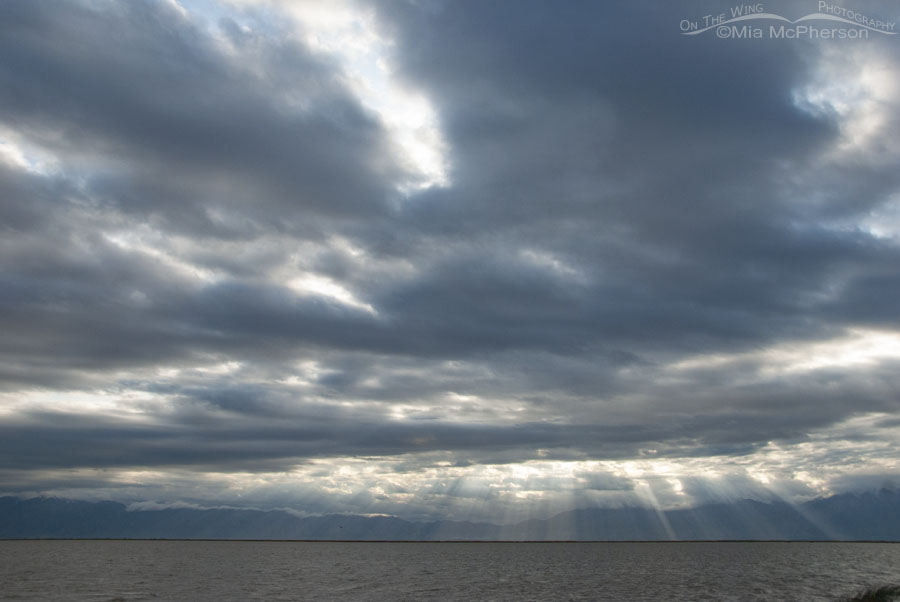
Bear River MBR under cloudy skies – Nikon D200, f7.1, 1/1250, ISO 400, Nikkor 18-200mm at 22mm, natural light
The photo above was taken in May of 2012 in the same general location as the video when that unit had plenty of water in it. The difference between the two levels of water is remarkable. The water is very shallow but it is life sustaining for the birds.
Sure, the draw down of water seen in the video was planned by the refuge management but if more dams are placed on the Bear River less water will get to the refuge and decisions might need to be made to allocate whatever water is available only to certain units. That would have a huge impact on the birds that depend on the refuge either as breeding grounds and for those birds that use the refuge as a stopover during migration.
This video is taken looking west from the west side of the auto tour route at Bear River Migratory Bird Refuge.
This is an area where there should be much more water than there is currently, water can usually be seen right up to where the phragmites are and even beyond.

American White Pelican against a dark background – Nikon D200, f7.1, 1/1000, -1.0 EV, Nikkor 200-400mm VR with 1.4x TC at 400mm, natural light
Normally this time of the summer I see lots of American White Pelicans on this part of the auto tour route a long with the young that hatched this year. We have the largest breeding colony of these big, white pelicans in North America close to the refuge. They nest out on islands in the Great Salt Lake and find food in the freshwater marshes surrounding the lake. The refuge is very important to American White Pelicans and if less water gets to the marshes the pelicans could be in trouble.
Double-crested Cormorants also frequent this area to hunt and catch fish.
Water is not currently flowing into this area, the water that is there now is where there is a trench at the bottom that is deeper than the surrounding area, it is slowly drying up too.
This video is taken from the west side of the auto tour route at Bear River Migratory Bird Refuge, typically this area is full of water but has been drawn down for maintenance work on the dikes. I was looking towards the north east when this video was created.
Driving on the auto tour route on a clear day the Wasatch Mountain Range can be seen off in the distance, the day I took this video there was smoke obstructing my view.
This unit has been dry for some time now and vegetation has grown up on the mudflats for as far as I could see. If a good supply of water doesn’t come into this unit from the Bear River in the future we might have to get used to views like this.
Looking west again from the auto tour route at Bear River Migratory Bird Refuge.
This is an area of the auto tour route where the water normally flows from the refuge towards the Great Salt Lake, right now it is more like a very large puddle. A new replacement boat ramp is being built at this location. Yes, hunting boats are put in here when the water level is higher.
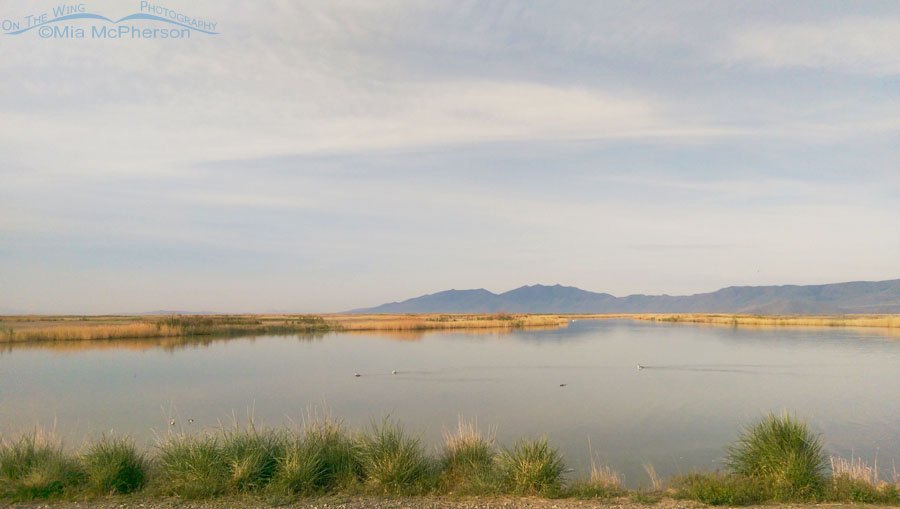
Looking west from one of the boat ramps at Bear River Migratory Bird Refuge – Crappy cell phone shot grabbed from a video
This grab from a cell phone video was taken in the same area as the video above when water was flowing freely, isn’t that quite a difference?
Having enough water in the Great Salt Lake is critical for the Salt Lake Valley, we depend on snowfall and spring run off filling reservoirs for our water supply and the Great Salt Lake causes lake effect snow which dumps on the mountains and increases the snow pack. The lower the water level in the lake gets the less chance we will have of the lake effect snows. The Great Salt Lake has been drying up for several years now and that can impact not only our water supply from the reservoirs but the supply of water that feeds the rivers such as the Bear River which the Bear River Migratory Bird Refuge is dependent on.
This video was taken at the far southwest corner of the Bear River Migratory Bird Refuge auto tour route. This time of the year there is normally ample water here but due to maintenance the water was drawn down earlier this spring.
As I mentioned earlier there is quite a difference between having water and not having water in the unit where the water was drawn down on the refuge. The vegetation in this area is taller and it also appears thicker because the mudflats stayed moist for a longer period of time than other areas.
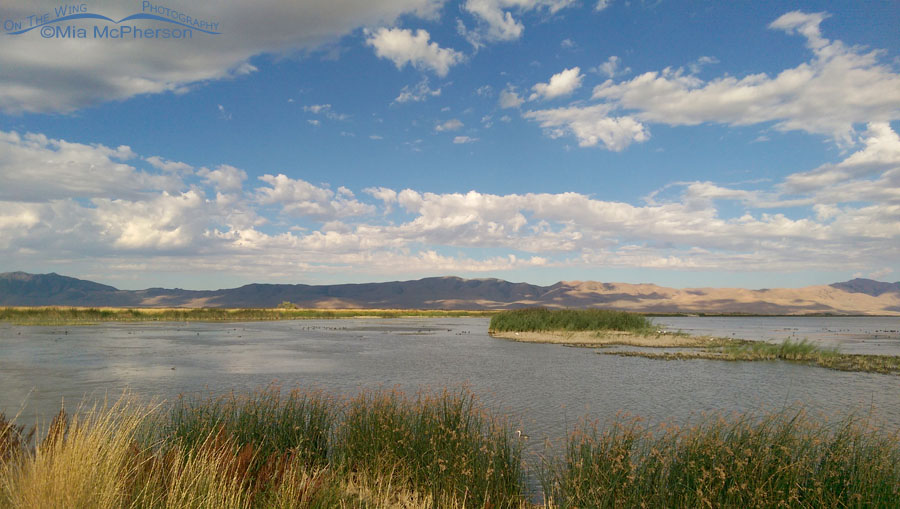
Southwest corner of the auto tour route at Bear River Migratory Bird Refuge – Cell phone image
This photo was taken in August of 2016 , there was plenty of water back then.
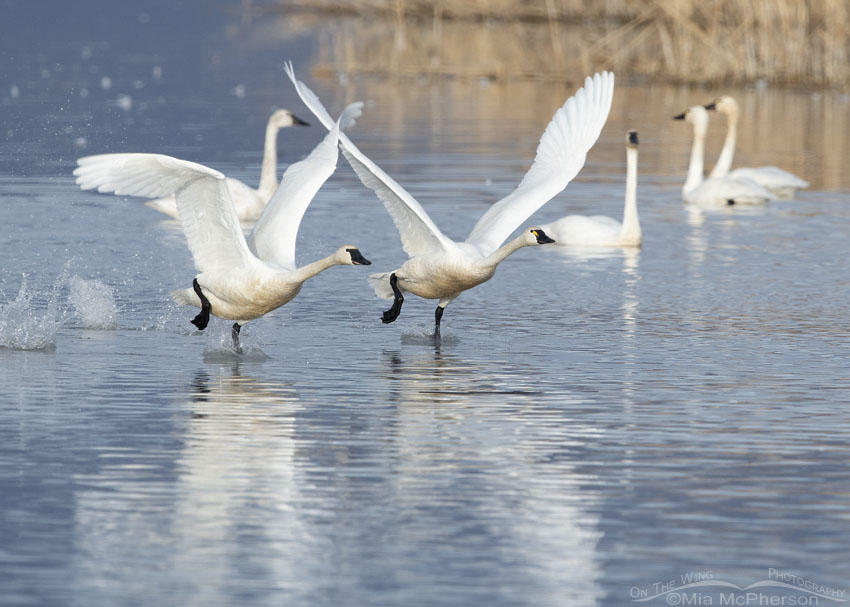
Two running Tundra Swans lifting off from Bear River Migratory Bird Refuge – Nikon D500, f7.1, 1/1600, ISO 640, +0.3 EV, Nikkor 500mm VR with 1.4x TC, natural light
In the video I mentioned photographing Tundra Swans in this area, they are just one of the bird species that frequent this area of the auto tour route when there is water present.
Tundra Swans depend on the refuge during migration and for overwintering. Other waterfowl species use the refuge during migration too and some breed and nest on the refuge. With less water the waterfowl species would have to go elsewhere after eons of using this important and critical area.
Hunters should be up at arms (pun intended) about 3 new proposed dams on the Bear River which could reduce the amount of water that the refuge would have because it would also reduce the waterfowl population.
Taken on the last leg of the Bear River Migratory Bird Refuge showing the large water unit where I typically see lots of shorebirds like Long-billed Dowitchers and Franklin’s Gulls this time of the year when the water is there.
What my videos show is the result of a planned draw down of water so that refuge staff can do maintenance on the dikes at the refuge, I want that to be clear, but according to the Utah Rivers Council the state of Utah would like to divert 20 to 25% of the volume of water in the Bear River, 300,000 acre feet, to provide municipal water for the Wasatch Front most of which will be used on lawns. Water sucking, Bluegrass lawns.
Water that is essentially wasted and that does not reach the Great Salt Lake or its surrounding marshes.
What happens if 20 to 25% of the water in the Bear River is diverted before it reaches the Bear River Migratory Bird Refuge and the Great Salt Lake?
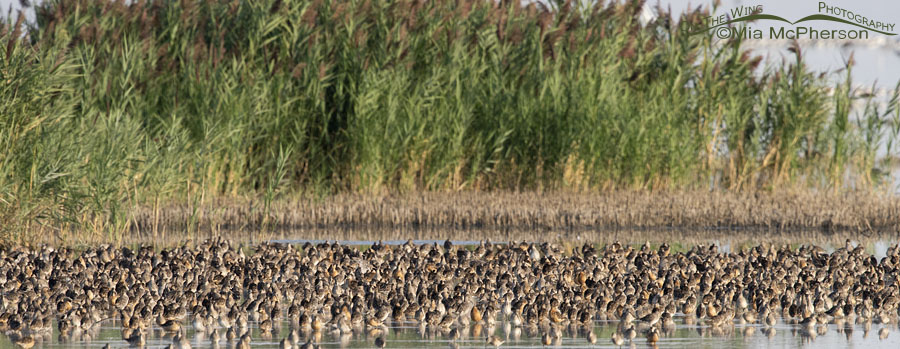
Thousands of Long-billed Dowitchers resting on their fall migration – Nikon D300, f6.3, 1/2500, ISO 640, Nikkor 200-400mm VR with 1.4x TC at 400mm, natural light
The diversion would mean much less water for Bear River Migratory Bird Refuge and the freshwater marshes surrounding the Great Salt Lake, critical habitat for 8 million migrating birds.
The Great Salt Lake is already drying up, I’ve written about that before here on my blog, one of the articles had before and after photos which show images taken three years apart from the same location on the causeway to Antelope Island State Park and the difference in the water level of the lake was alarming to me then and it has only gotten worse since that time.
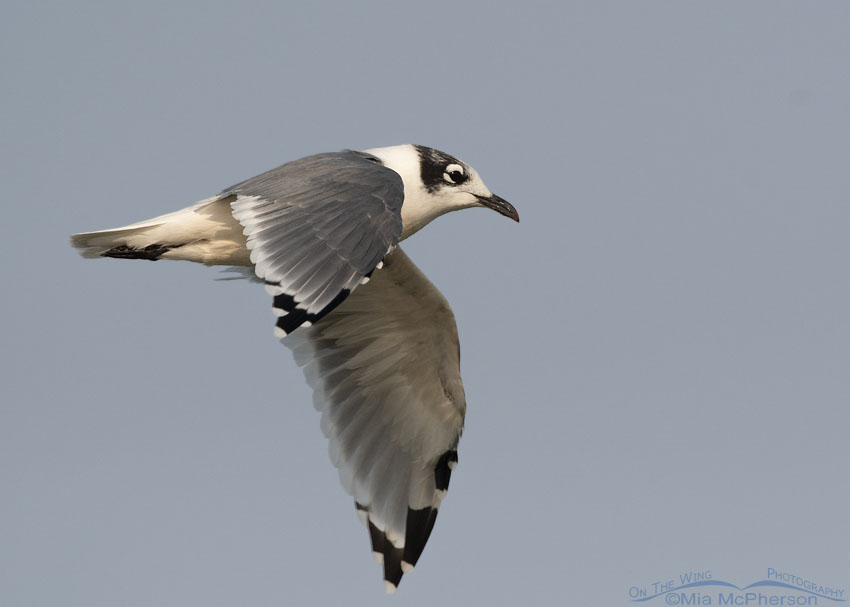
Franklin’s Gull in flight over a Bear River MBR marsh – Nikon D500, f7.1, 1/3200, ISO 640, Nikkor 500mm VR with 1.4x TC, natural light
Eight million birds would have no place to stop, no place to refuel for their long journeys and because the Great Salt Lake and its surrounding marshes are the American West’s largest remaining wetland ecosystem the loss of water from the Bear River would have a significantly damaging impact for the birds and for humans too.
The more the lake dries the more dust there will be in the air and the Salt Lake Valley already has horrible days where the air quality just plains sucks. Where it can be hard for people to breathe. Harder still for the people who have allergies and asthma. Beyond those issues there is also a problem with mercury, heavy metals and other pollutants that will be exposed to air. We get hurricane force winds here that turn the sky milky white with dust and particulates, just what will be in the air we breathe? And what are the long term effects of that on humans, especially children?
Have a look at this video I created on a very windy day from the causeway to Antelope Island State Park, I was looking southwest from the first bridge after the entrance. In 2009 when I moved to Utah there was water in this location, I took this video on September 2, 2015.
You can’t even see the island from my view point. With lower levels of water in the lake the exposed lake bed can easily be disturbed. I only stayed outside for a minute or two because I didn’t know what I was breathing in.
I took this video while moving towards the end of the auto tour route at Bear River Migratory Bird Refuge. This channel is almost always full of water. Cattle are being used to help mitigate the invasive phragmites, that is why I mention the vegetation being chewed down.
In this video clip I mention that the vegetation alongside the road (the auto tour route) has been chewed down and that it might make birds easier to spot the reason for that is because the vegetation had grown to a height which made it hard to see birds on this particular water channel.
The refuge is using cattle to help mitigate the invasive phragmites that has become a huge problem in all of the marshes surrounding the Great Salt Lake.
My reason for the video though was the lack of water in this channel. I wondered if water would even reach this channel if 20 to 25% of the volume of the Bear River is diverted before reaching the refuge?
Near an observation deck on the auto tour route of Bear River Migratory Bird Refuge.
That water diversion from the Bear River would undoubtedly have severe impacts on our beloved Bear River Migratory Bird Refuge and that is even before we speculate about the impact climate change will have on this environment. I know that there are many climate change deniers on Capitol Hill and our governing bodies on the state and federal level.
It is well past time for them to pay attention to what scientists are telling us about climate change, they need to wake up. We need to wake them up or vote them out.
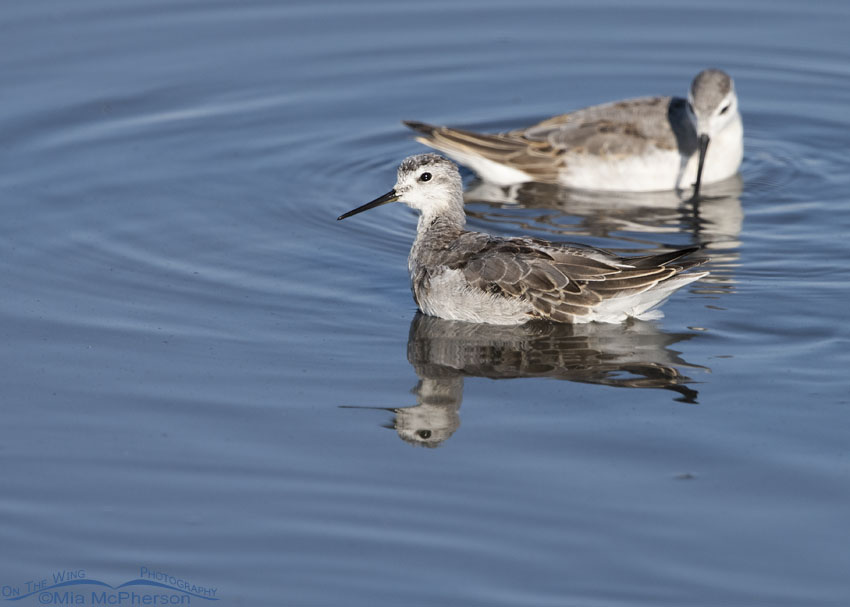
Wilson’s Phalarope giving me the stink eye – Nikon D810, f7.1, 1/1600, ISO 400, Nikkor 500mm VR with 1.4x TC, natural light
What affects the birds will also affect us. It is as simple as that. Standing up for nature is fighting for our lives.
Mia


Heartbreaking. And sadly familiar.
Thank you Mia, this is important, albeit distressing, work to do. Documentation with contrasting photos is very informative.
Terrific documentation of the crisis our nation and world faces if our government officials do not address our impact on the climate. It’s a sad post but accurate. The impact of what we are doing to our country and planet needs to be reversed now. I contact my representatives many times a month and look at voting records before voting but it does not seem to make a difference. However i will continue to do what i can. If all of us continue to do what we can , maybe we can turn things around.
I could not finish reading the post this morning. I found it too bleak. Nothing to do with your work, only that I am too aware of the situation. I do what I can but it falls on deaf ears!
Scary. Sad. Disturbing.